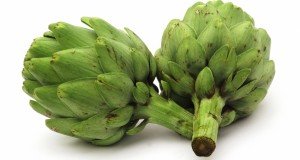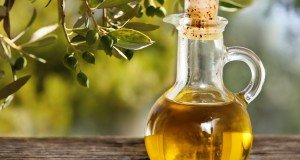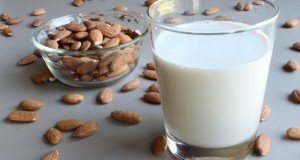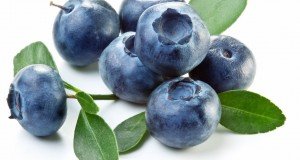How milk thistle extract can support liver health and healing
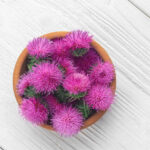 (NaturalHealth365) With its spiky purple flowers and dull green leaves, milk thistle may appear to be nothing more than an ordinary weed growing wild in vacant lots and fields. Yet, this unimpressive-looking plant is truly a shining star when it comes to avoiding disease and promoting healing.
(NaturalHealth365) With its spiky purple flowers and dull green leaves, milk thistle may appear to be nothing more than an ordinary weed growing wild in vacant lots and fields. Yet, this unimpressive-looking plant is truly a shining star when it comes to avoiding disease and promoting healing.
Milk thistle, scientifically known as Silybum marianum, is prized by natural healers for its ability to eliminate liver ailments, including nonalcoholic fatty liver disease, which is currently reaching epidemic proportions in the United States.
But supporting liver health is not milk thistle’s only gift. Discover how this extraordinary herb can help you.
Milk thistle protects against toxic effects from cancer treatment, arrests tumors
The active ingredient in milk thistle, an antioxidant flavonoid called silymarin, reduces the inflammation and oxidative damage that can trigger cancer. It also helps preserve glutathione, the body’s premier inflammation-fighting antioxidant.
Scientists have known for some time that milk thistle may act against cancer. In a review conducted at the University of Minnesota, researchers cited “strong evidence” for silymarin’s liver-protective and anti-cancer effects. Significantly, they credited silymarin with combating cancer by inhibiting the binding of toxins to cell membrane receptors.
In a new study published in The International Journal of Oncology, researchers found that silibinin, a form of silymarin, suppressed chemoresistance, the condition in which cancer fails to respond to the effects of drugs.
The team noted that silibinin also prevented further malignancy, protected against potentially cancer-causing DNA mutations, and inhibited tumor growth.
In other research, researchers found that silymarin also helps prevent liver damage from chemotherapy and protects the skin and mucosal lining from damage from radiation therapy.
Milk thistle is a potent antifungal agent
Overgrowth of Candida albicans, a common fungus, can cause symptoms of fatigue, “brain fog,” digestive problems, and skin rashes. And, a growing problem of drug resistance in pharmaceutical antifungals – which parallels the current epidemic of antibiotic resistance – can make Candida difficult to treat.
Researchers have found that silymarin can penetrate the cell membrane of the Candida microbe, stopping the pathogen’s growth and spread and helping to clear the overgrowth.
Silymarin is also effective in blocking and inhibiting biofilms, layered communities of pathogenic microorganisms that are stubbornly resistant to treatment.
Silymarin helps to regulate glucose levels
For the past thousand years, herbalists and Ayurvedic healers have advised milk thistle to support healthy blood sugar levels, and modern research confirms the value of this ancient remedy.
In one recent study, a 90-day course of a combination of milk thistle, boswellia, and nettles slashed hemoglobin A1c levels – a measure of blood sugar over several months – by a substantial 19 percent.
The herbal combination also drastically reduced blood sugar levels – from an average of 150 to 180 mg/dL to an average of 124 mg/dL – and triglyceride levels.
In addition, a recently published cell study shows that silymarin protects the retina from diabetic damage, a common consequence of the disease.
The Big NEWS: Milk thistle supports a healthy liver
Milk thistle’s main claim to fame is its ability to improve liver enzymes, rebuild liver cells, and alleviate liver ailments. In addition to easing hepatitis and cirrhosis, milk thistle shows promise in dealing with nonalcoholic fatty liver disease and halting the progression to steatohepatitis, a more serious form of the condition.
Research has supported milk thistle’s beneficial effects on liver disease, with one study showing that hepatitis patients treated with silymarin returned to work sooner and experienced less depression and anxiety than those in the control group.
In addition, milk thistle helps detoxify the liver and protect against injury from heavy metals and drugs.
In a review published in Phytotherapy Research, the team credited silymarin with reducing liver injury caused by a variety of toxins, drugs, and heavy metals, including acetaminophen, carbon tetrachloride, radiation, alcohol, iron overload, and Amanita phalloides, a type of poisonous mushroom.
As an added bonus: milk thistle’s protective effects also extend to the stomach. The herb has been shown to suppress gastric inflammation and protect against ulcers caused by non-steroidal anti-inflammatory drugs.
Surprising fact: Milk thistle has antidepressant properties
Yet another surprising benefit of milk thistle is its ability to function as a natural mood elevator.
Animal studies support its ability to reduce anxiety and depression caused by traumatic brain injury, which it appears to do by reducing the activity of microglial cells caused by a disturbance in the neural circuits between the limbic system and the cortex of the brain.
In one study, silymarin performed as well as the pharmaceutical drugs fluoxetine (Prozac) and diazepam (Valium) in supporting mood.
Researchers noted that silymarin reversed stress-induced changes to the hippocampus and cerebral cortex while boosting levels of the neurotransmitters serotonin and dopamine.
Because of silymarin’s ability to reduce inflammation and neurodegeneration, researchers are even exploring its potential to prevent and treat Alzheimer’s disease.
How should I take milk thistle?
Experts recommend temporary short-term amounts of 150 mg, taken one to three times a day, for detoxification. A holistic healthcare provider may recommend 50 to 150 mg a day for liver support, maintenance, and longer-term use. Use a formulation standardized to 70 to 80 percent silymarin for best results.
As always, consult your holistic doctor to determine if milk thistle is right for you and to determine the proper amount. Although it is generally considered safe and well tolerated, high amounts can cause mild digestive upset.
Note: if you are allergic to any member of the aster family – such as daisies, ragweed, marigolds, or chrysanthemums – don’t take milk thistle.
Milk thistle has long been revered for its ability to cleanse and detoxify the liver. However, recent research confirming its ability to ward off other diseases demonstrates that this herb is valuable and versatile.
Editor’s note: To support healthy liver function, I highly recommend LuvByNature LiverLuv – which is gluten free, non-GMO and delicious.
Sources for this article include:



